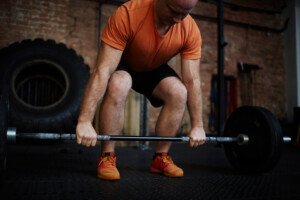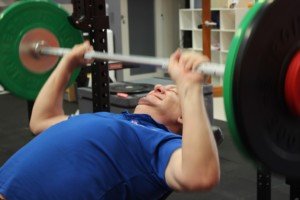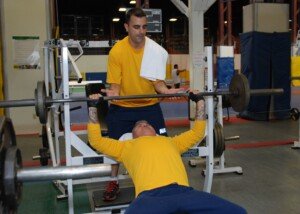
A vascular surgeon discusses the obscurity of research involving lifting weights with an aortic aneurysm.
The restrictions for lifting weights in people with an aortic aneurysm are, quite literally, all over the map.
It’s like a bell curve: Most doctors urge their patients with aortic aneurysm to lift no more than 25-50 pounds.
On one end of the bell curve are physicians who urge against just about ANY kind of lifting, meaning men should not lift more than 10 pounds, and women should not lift more than 5 pounds.
Think of how much these restrictions would disrupt a person’s life; being warned by their doctor to avoid carrying their own babies!
This means a woman with an aortic aneurysm should not lift her baby from a crib!
What if nobody else is there to pick the baby up? What if nobody is there to put her baby, let alone a heavier toddler, in the car seat?
The other extreme are doctors who warn against straining with heavy weights, but tell their patients with aortic aneurysm they can continue working out – just don’t bear down to the point of having to grunt and moan.
As a personal trainer with an interest in medicine, I dug very deep into this issue and came up with very little research.
“As far as hardcore data on what the weight limit should be for an individual with known thoracic aortic aneurysm or abdominal aortic aneurysm, I am not aware of any,” says Seyed-Mojtaba Gashti, MD, a board certified vascular surgeon with Broward Health Medical Center in Florida.
“It is well-documented that aerobic exercise will actually decrease the systemic blood pressure.
“However, exercise such as weight lifting, if done repeatedly in succession, actually causes significant increase in systemic BP.”
As a person progresses further into a weight set, blood pressure increases.
Pushing out those last few reps means that blood pressure is its highest, and the exercises that cause the highest blood pressure increase, when done with heavy resistance, are the deadlift, barbell squat, hack squat and leg press.

Freepik.com, pressfoto
Dr. Gasthi continues, “I believe that most of these recommendations are therefore at best conjecture and perhaps minimally common sense.”
Lifting Weights on the Job and Aortic Aneurysm
Weightlifting gyms across America are filled with people every day, yet one doesn’t hear about aortic dissections occurring left and right at gyms.
About 200,000 people every year are diagnosed with abdominal aortic aneurysms, and about 30,000 with thoracic aortic aneurysms.
So where are all the dissections that you’d think be brought on by lifting weights?

Yes, a statistically significant percentage of these diagnoses are in people under age 50, and more and more people over age 60 are hitting gyms as well.
Further, millions of people every day do heavy hoisting on the job. Where are all the dissections?
Dr. Gashti explains, “I think that 50 pounds,” including for people who lift on the job, “is not very much, but if you have a 7 cm AAA, you should probably not be lifting more than that.
“But if you have a 3.5 cm AAA, I normally tell my patients to go about their lives normally and am yet to regret these recommendations.”
Research on lifting weights with aortic aneurysm is scarce.
“I am not aware of any randomized controlled trials that have looked into these issues,” says Dr. Gashti.

Dr. Gashti specializes in the diagnosis and treatment of vascular disease including abdominal and aortic aneurysm.
 Lorra Garrick has been covering medical, fitness and cybersecurity topics for many years, having written thousands of articles for print magazines and websites, including as a ghostwriter. She’s also a former ACE-certified personal trainer.
Lorra Garrick has been covering medical, fitness and cybersecurity topics for many years, having written thousands of articles for print magazines and websites, including as a ghostwriter. She’s also a former ACE-certified personal trainer.
.


























